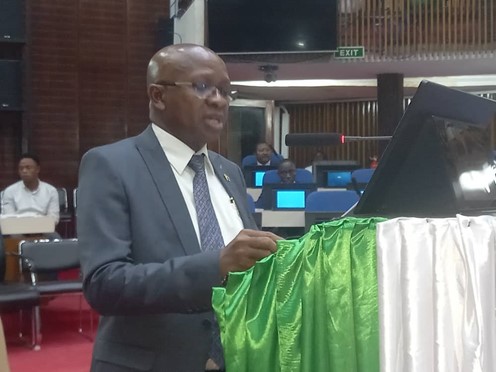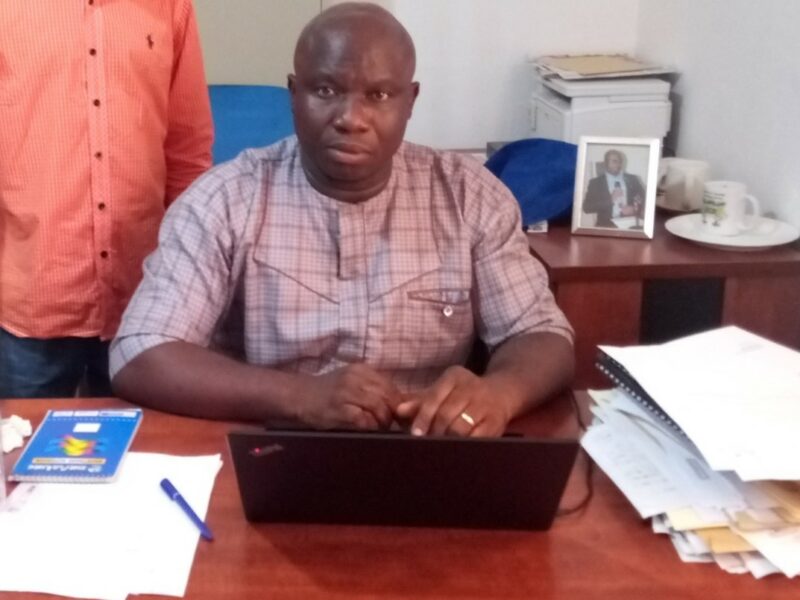Freetown Water Crisis: A Human Rights Scourge-Part I
Despite the effort from the Guma Valley Water Company with the help of the Ministry of Energy & Water resources, safe and pure drinking water in the city has been one of the biggest ills affecting normal life and carries mammoth health implications for the citizenry.
The reality in the city is that the majority of the people depend on the use of water fetched from unsafe sources often responsible for the almost perennial health hazards of typhoid and diarrhea stocked with the Freetown Health scenario. Whilst it is expected that the city’s water agency – the Guma Valley Water Company stand up to the challenge of providing the whole of the city with pure drinking water, it is also more than clear that the company is very much constrained in dealing with the problem.
The Guma Valley dam that was created in the 60s was meant to serve a maximum 80 thousand capacity in the city; but it is today serving a city of more than two million people. This trend is a sickening one as it leaves a lot of public impact implications as to the health, general welfare, social and academic effect on children that are obviously the most affected of all in this ugly situation. Schools have reopened and most Head Masters Principals this writer spoke to report an everyday increase on the number of late comers to schools; with more than 90% of children giving the attendance to their morning chores as the reason for their lateness.
At the homes all over the city, most homes rely on their children to fetch water for domestic use in the morning before going to school. As early as 6 a.m. on school days, you see children taking to the street with gallons and buckets in their hands scrounging from water usually from distances as far a mile or more. This chore usually lasts in Freetown to as late 8:30 a.m. when school session has already started in schools; consequent of this, they go in a mad rush to school either fearing not to miss lectures or in fear of the consequences from school authorities as a repercussion of their lateness which is largely no fault of their own.
In class at school, you see them dozing into quick sleeps from the sleeplessness they got from their early wakening and fatigue from carrying water from long and sometimes rough distances. The result too from this is reflected in their academic performances that cut right across from elementary to high school; especially in external examinations. This factor can certainly not be excommunicated from the mass failure of children in our school system. Casting the blame of parents alone in this instance sounds absurd and largely geared at circumventing the solution to the very problem. What is salient to consider here is that we should be made to acknowledge that the problem of water crisis has diverse ramifications and implications. This may be just one. In this case it is expected that government and child and humanitarian organizations fighting for the welfare of children to come together and nip the problem in the bud. This underscores the importance of solving the Freetown water crisis.Â
Apart from the apparent curse the Freetown water crisis has placed on the educational undertakings of school going children in the country’s capital, other very noticeable and scourging effects are placed on the lives of children, pregnant mothers and the general Freetown citizenry. One cannot dispute the fact that the majority of the city’s population gets their water from unprotected sources. Hillside communities that now incontrovertibly make the majority of the growing city dwellers, survive from unprotected spring and stream water sources. Dwazack community, New England Community, Sumaila Town Community, Gloucester, Regent, Upper Kissy Brooke, Cassel farm, Thunder Hill, and Kamayama-Malama in the far west; all are largely dependent on such unsafe water sources that seem to be the only remedy to the water problem rocking the hell out of their lives.
Reports of typhoid and diarrhea are among the most thorny health hazard reports coming from these communities and with no proper health records in the whole of the country, only are only left to fathom how much damage is being inflicted on the health of our people in those areas.
Thinking the problem through after visiting these communities, one is left to pronounce that the problem of the water problem is just one of big neglect of serving agencies and the government towards the actual welfare of the people. The truth is, we don’t have to take the already over burden Guma water supplies to those communities; they have their own water sources that could be treated, controlled and sustained for the utilization of the community. That would not cost much considering what’s at stake if necessary and appropriate measures are not taken. All throughout the rainy season, there’s an abundance of water supplies bursting from all parts of the hills, these waters could be collected, treated and saved for use in the dry season.
There are hundreds of development agencies in the country both local and international claiming to be serving and protecting the interest of children and the ordinary man but have not ever taken pragmatic steps to solving the problem of the water crisis scourging city dwellers and children the most. Join me in my next edition as we explore and follow up on this very important issue.Â
Stay with Sierra Express Media, for your trusted place in news!
© 2009, https:. All rights reserved.






